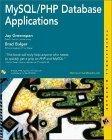Answered step by step
Verified Expert Solution
Question
1 Approved Answer
Problem 1. (a) C = { (0, 0, 0, 0, 0, 0), (0, 1, 1, 1, 1, 0), (1, 0, 0, 0, 0, 1), (1,
Problem 1.
(a) C = { (0, 0, 0, 0, 0, 0), (0, 1, 1, 1, 1, 0), (1, 0, 0, 0, 0, 1), (1, 1, 1, 1, 1, 1) }. Here q = 2.
Problem 2. Assume the code from Problem 1(a) was used in transmission, and the following words were received. Decode each of these words using the nearest neighbour decoding algorithm. (The incomplete decoding version: if there is more than one nearest neighbour, declare an error.)
(a) (0, 1, 0, 0, 0, 0),
(b) (1, 1, 0, 0, 1, 1),
(c) (0, 1, 0, 1, 0, 1),
(d) (1, 1, 0, 0, 0, 0).
Step by Step Solution
There are 3 Steps involved in it
Step: 1

Get Instant Access to Expert-Tailored Solutions
See step-by-step solutions with expert insights and AI powered tools for academic success
Step: 2

Step: 3

Ace Your Homework with AI
Get the answers you need in no time with our AI-driven, step-by-step assistance
Get Started


